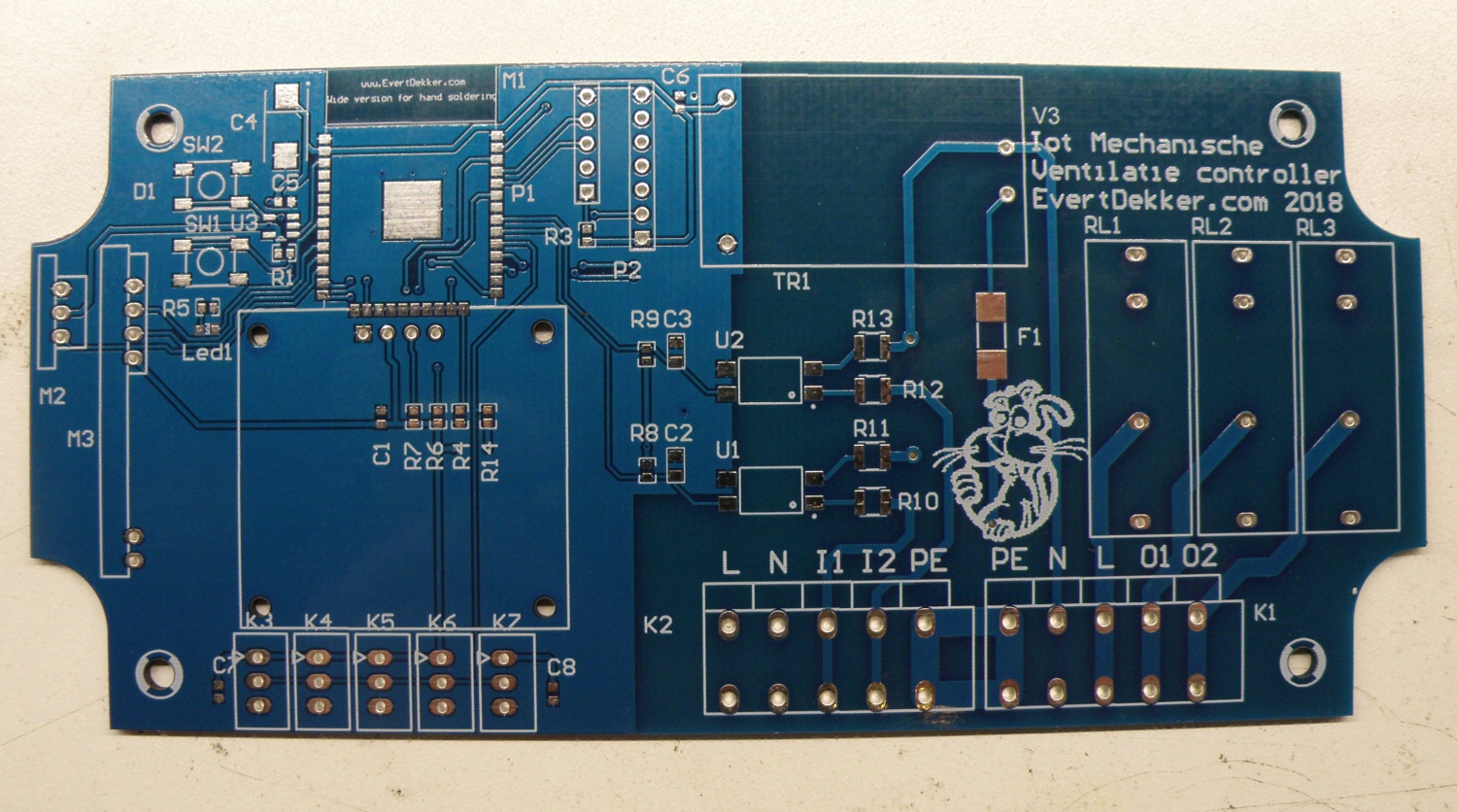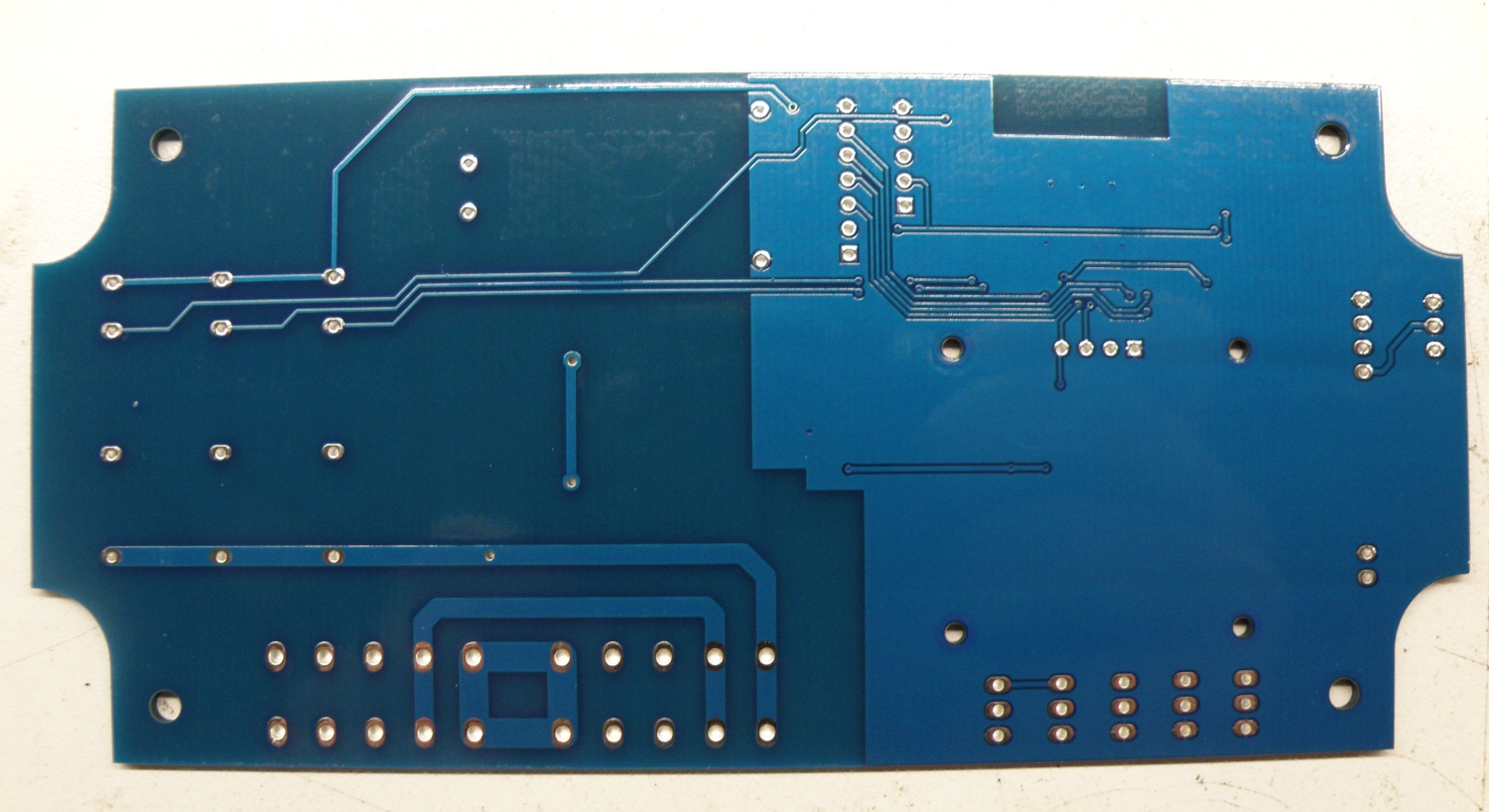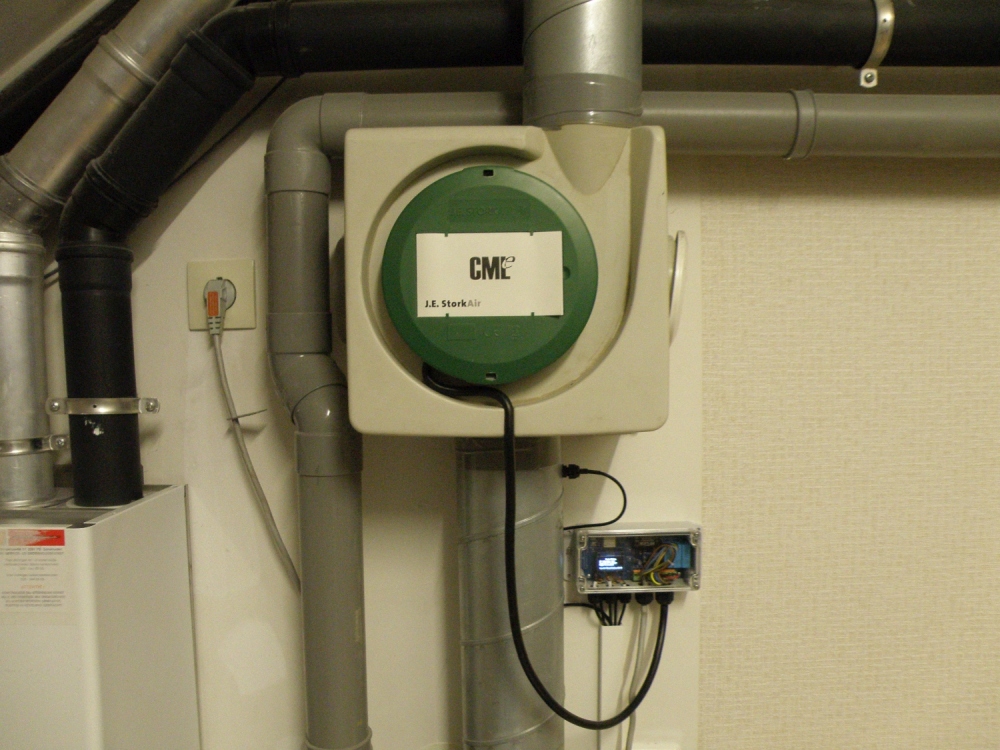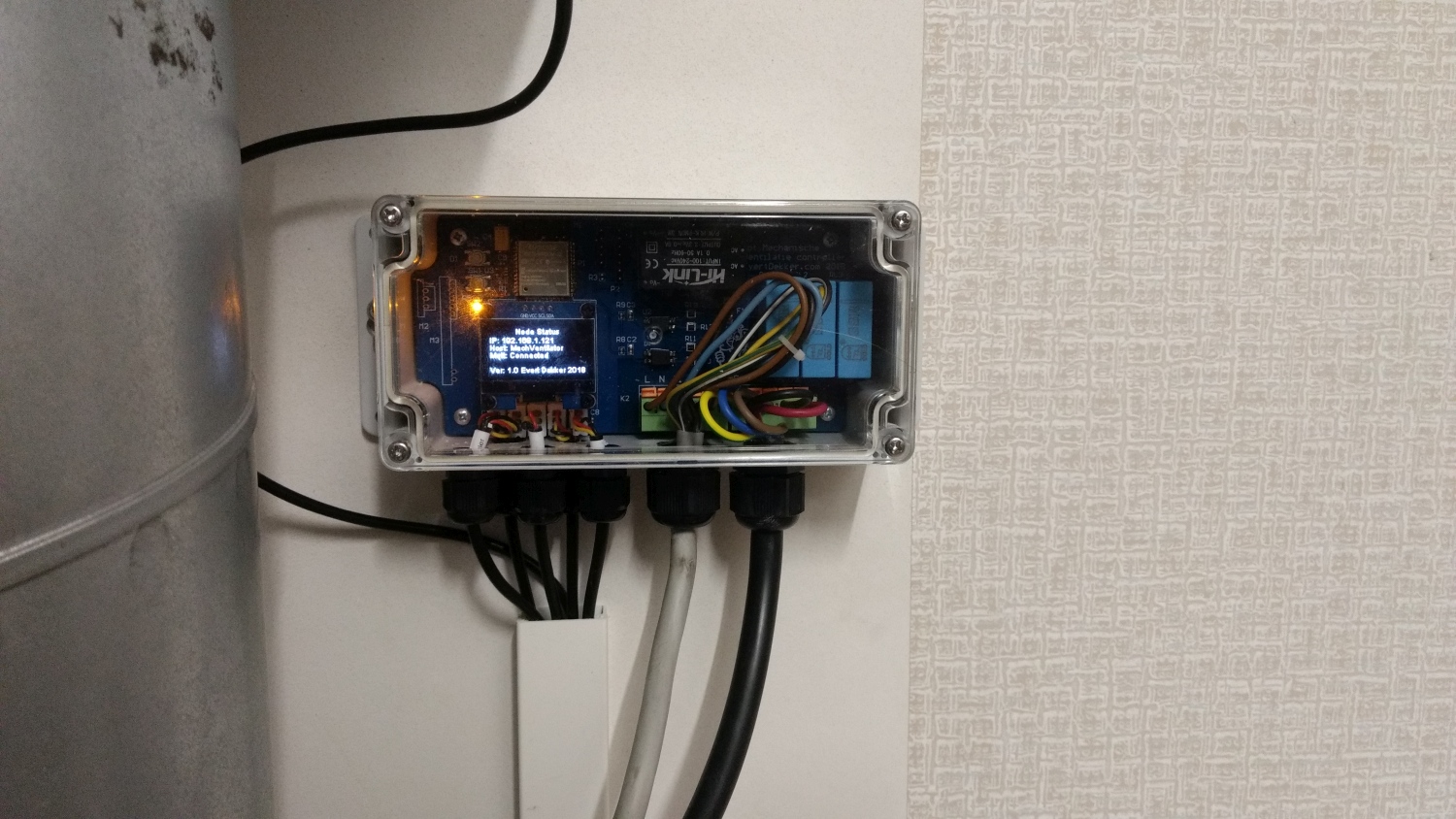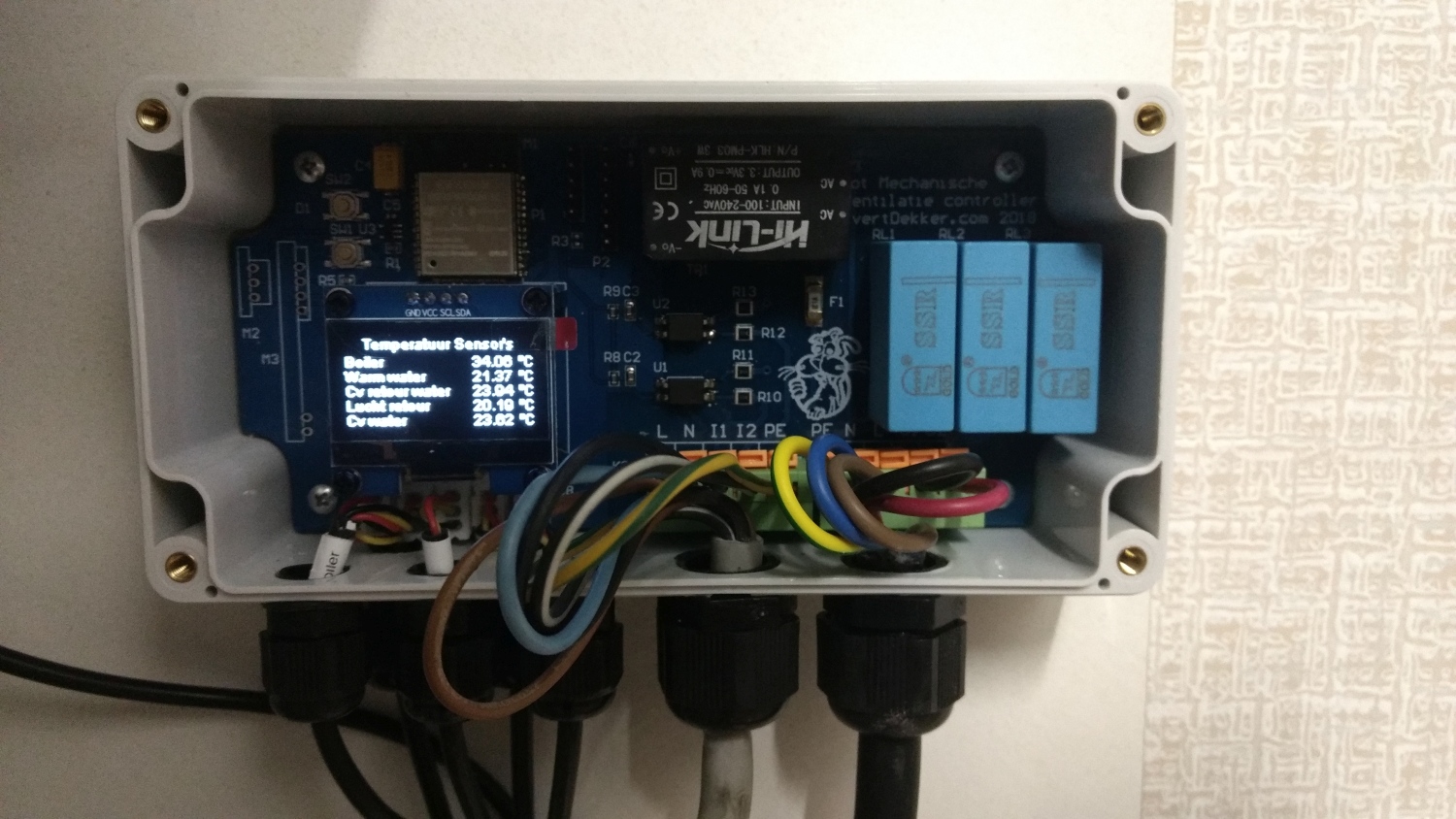Iot house exhaust air systems controller
First of all I’m going to explain what a house extractor is used for. Because our houses are very well isolated (here in The Netherlands at least) we need some air flow to get rid off the polluted air in house and get some fresh oxygen in. The polluted air consists meanly cooking smell, co2, water vapor from showering and exhaling.
To accomplish this we have an central extractor (mechanische ventilator for our dutch readers).
Normally the extractor is always running on low speed and with the help of a switch in the kitchen you can put it in speed 2 or 3. There’s no way to switch it completely off.
To let my Joshua domotica Iot (internet of things) get control of the extractor I designed this hardware interface. With this interface and the help of Mqtt and Node-red you can control the extractor and still use the original switch in the kitchen to control it.
In the design I used 3 solid state relays so it’s also possible to switch the extractor completely off. With the help of node-red the extractor will be switched off when nobody is at home and the outside temperature is <18°C and the humidity in the bathroom is below 85%. Why? When nobody is at home the central heating system is also switched to a lower temperature with the help of node-red and Toon thermostat. To prevent that the house was cooling down (fast) due the extractor is switched off because this was sucking off the warmth.
The Iot hardware interface was placed near the central heating system and solar collector it was also interesting to add some temperature sensors to measure different parameters and see what’s going on and eventually use this data in Node-red. 5 DS18B20 where added to measure these values.
The rest of the schematic is not that special the part regarding the mains is copied from my Iot light switch with mains input. Added a nice 1.3″ i2c o-led display for some feedback.
As you can see in the schematic and pcb there was also the plan to add 433Mhz receiver and transmitter to control the extractor with “klik aan klik uit”, however I don’t think this option is necessary anymore and leave it for what it is.
This was my first project that I use an ESP32 in the form of an Esp32-wroom32. The software development was all done in the Arduino ide and Sloeber ide.
What a lot of work was this. Because the Esp32 Arduino core and a lot of used library’s are still buggy I had to do a lot of debugging, scrolling to Github issues, open new issues and finding new library’s. The Esp32 was giving me a panic handler ones in a couple of days, connecting the serial port to a computer to log everything helped me to solve this. Then after updating the Arduino esp32 core to version 1.0.0 there where again new problems. Most of them where related to the dual core’s that where not working probably together with some library’s. Now it looks like it all working stable.
Below a screenshot from Node-red where all the data and functions for the extractor are handled. At the top the sensor data is stored in a SQlite and Influx database. In the middle the Node-red dashboard is build and data query from the SQlite database and shown in charts.
Below that we have the control over the extractor speed with left and right connection to the Mqtt broker.
And in the bottom flow the status of the extractor will be stored in the SQlite database.
Here you can also see what amazing charts you can make with Grafana and Influx database.

